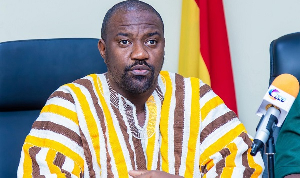Improving Internet Accessibility In Rural Communities: A Key To Development In Ghana
By Gameli Adzaho, The Gamelian World (http://gamelmag.blogspot.com)
20th May, 2011
There is a yawning gap between the rate of Internet adoption in rural and urban Ghana. While Internet adoption is growing steadily in Accra and other major cities, there is virtually no connection in most parts of rural Ghana. Considering the Internet’s potential to radically impact education, health, agriculture and socio-economic development, it is imperative that stakeholders adopt and implement strategies to close the prevailing rural-urban digital divide. This write-up explores barriers to Internet access in rural Ghana, highlights some of the current interventions being implemented and draws correlations between Internet access and development in Ghana.
Background
Ghana became a West African Internet pioneer in 1995 when Network Computer Systems (NCS), led by the visionary Nii Narku Quaynor, set up a connection to the Internet backbone via an analogue leased line. Since then the number of local Internet users has risen from a mere 3000 to about 2.5 million (~10% penetration rate).
Consequently, the Internet “boom” has triggered entrepreneurial efforts in the high technology space as smart tech-savvy young business people are innovating around the platform for financial reward. Sadly, all the advances in the country’s Internet sector seem to be concentrated in Accra and a few other urban centres, severely limiting the platform as an enabler of development and opportunity for ordinary people.
Barriers to Internet Connectivity in Rural Ghana
From the early days, connection to the Internet has been handled by private companies who are driven by purely commercial interests. These Internet Service Providers (ISPs) are not attracted to operating outside the major cities as the income levels of people in the rural communities are significantly low and cannot meet their charges. Even where ISPs and network operators are ready to extend their services to deprived communities, there is a severe lack of infrastructure and equipment: few people in rural communities own personal computers and power supply is absent or erratic. As a result, download and upload speeds are extremely slow and Internet users face frequent breaks in their connections. Broadband connections via satellite do not live up to their hype and multinational telecommunication giants, offering mobile broadband do not extend their 3.5 G coverage to rural areas. All the above factors conspire to make Internet access unattractive to potential users.
The poor quality of service comes with high connection costs due to low number of users per community and the high operational costs incurred by providers in their quest to bring Internet to the villages. High connection cost for a service that does not guarantee value for money is a big disincentive for rural dwellers who shun from connecting to the web.
Many people in rural communities have low levels of education, which prevent them from understanding the relevance of the Internet and how the platform could transform their lives. They therefore fail to take advantage of its tools to develop themselves and their communities. Even where people are aware of the possibilities, they are hindered by little or no computing and Internet skills, due to lack of training. There is also a towering language barrier in the path of Internet access for rural folk as Ghanaian language websites are almost non-existent. Almost all Ghanaian content is in English; this defeats the notion of building local content as a way of projecting culture in the Internet age. The lack of language options therefore severely hinders the typical villager who cannot find web pages in Twi or Ga.
Current Interventions
Mobile Internet, which comes with cell phone subscriptions, offers many rural dwellers instant access to the web. Similarly, the recent mobile broadband revolution sweeping through Ghana is welcome news as mobile telecom operators line up their various data offerings in the competitive arena. Mobile broadband has become the number one option for Ghanaian Internet users in both rural and urban areas.
The government is also pushing its own initiatives through the introduction of the national fibre optic cable, which would greatly boost access and reliability in the connectivity mix among rural Internet users. Further, computers and wireless Internet connections are being provided for many governmental institutions, such as schools and libraries, through the Ghana Investment Fund for Electronic Communication (GIFEC).
Technology NGOs, schools, communities and churches have also come up with their own interventions, ranging from building community ICT centres, providing solar powered equipment, organising training workshops, and building satellite links to connect rural folks to the global resource.
Impacts
First, equipping people with computing skills and Internet access will enable people to upload content relevant to their local needs. This may include crucial business information or relevant cultural knowledge. The opportunity is also created for creating local language websites which can serve as effective information dissemination tools to non-English speakers. Similarly, users will be enabled to share aspects of their culture with the wider global community, thus promoting cross-cultural understanding and diversity.
Giving rural dwellers Internet connectivity will enable them to gain access to vital information needed for their day-to-day work. For example, they can gain quick access to important government information. Again, farmers can look for information on the best variety of crops to plant, the most appropriate pesticide to combat plant disease or the latest market figures of their commodities.
Schools, training centres and other institutions will benefit, as the wealth of knowledge at their disposal will shoot up dramatically, positively stimulating learning, research and practice. Some of the many open source web development, collaboration and networking tools can be deployed to introduce e-learning at pre-university levels of education. For example, with e-learning platforms, students in schools where there are no teachers will have access to lessons without major hitches.
There are powerful impacts of increasing Internet access in health care as well. An interesting use case is the collection of epidemiological information for research and policy formulation purposes. Web-based systems can be used to collect raw data from field workers nationwide. This data can be immediately processed into formation and made available in real time. This will cut down on money spent on collecting such data yearly.
Finally, enabling quality Internet access in rural Ghana will promote local technology entrepreneurship and innovation as young people living in these communities will come up with solutions to meet their local and even global needs. High speed connectivity, low cost of living and serenity in the rural areas may even attract well-established high-tech companies to set up shop in these communities, creating job opportunities and pockets of innovation across the country.
Conclusion
Access to Internet in rural Ghana, unlike in the cities, is fraught with technological, economic and socio-cultural barriers. A number of effective measures including building infrastructure, providing education and training and lowering connectivity cost are being put in place by the various actors to raze down the barriers. If these commendable measures are consistently implemented, the Internet will truly be a tool for development in Ghana.
Opinions of Sunday, 19 June 2011
Columnist: Adzaho, Gameli














